Access and Transportation (original) (raw)
Getting to Kyoto
Tokyo and Kyoto are connected with each other by the JR Tokaido Shinkansen. Nozomi trains require about 140 minutes to reach Kyoto from Tokyo, Hikari trains about 160 minutes and Kodama trains about four hours.
The regular one way fare from Tokyo to Kyoto is 13,320 yen for a non-reserved seat or around 14,000 yen for a reserved seat. The Japan Rail Pass is valid on Hikari and Kodama trains, but requires a supplement fee of 4,960 yen on Nozomi trains.
The Tokyo-Osaka Hokuriku Arch Pass is a rail pass that allows holders to travel between Tokyo and Kyoto via Kanazawa, using the Hokuriku Shinkansen. It is not the fastest way to travel between Tokyo and Kyoto, but it allows pass holders to visit the less-explored Hokuriku Region along the way. It costs 30,000 yen and is valid for seven consecutive days.
The one way trip from Tokyo to Kyoto by highway bus takes about 7-8 hours. There are daytime and overnight buses. Fierce competition on the Tokyo-Kyoto-Osaka route has produced a wide variety of comfort levels (from discount to super premium buses) and an abundance of low priced offers.
Typical one way fares for discount buses, such as Willer Express, start from around 4000 yen; while premium buses charge up to 10,000 yen. If used effectively, the Japan Bus Pass can reduce the cost for the bus trip to around 3000 yen. Online reservations can be made through Willer and Japan Bus Online.
The closest airport to Kyoto is Osaka's Itami Airport, about one hour by bus from central Kyoto (more details). Most flights connect Itami Airport with Tokyo's Haneda Airport, with just a few serving Tokyo's Narita Airport. Flight duration is one hour. The regular one way fare is around 31,000 yen, but discount tickets are usually available for around 10,000 to 15,000 yen.
| Airline | Lowest fare | Average lowest fare |
|---|---|---|
| ANA | 12,726 yen | 14,207 yen |
| JAL | 13,115 yen | 14,497 yen |
| Skymark | 7,510 yen | 10,202 yen |
| Starflyer | 11,710 yen | 13,073 yen |
| ANA Wings | 12,803 yen | 15,007 yen |
| Jetstar Japan | 5,010 yen | 7,150 yen |
| Peach | 5,130 yen | 7,700 yen |

Driving between Tokyo and Kyoto via the Tomei and Meishin Expressways takes about five to six hours without breaks and traffic jams. The expressway toll is around 10,000 yen one way.
By local trains, the one way trip from Tokyo to Kyoto takes about nine hours and typically involves about four transfers of trains. The regular fare is a relatively expensive 8360 yen, however, with a Seishun 18 Kippu you could theoretically do the trip for as little as 2410 yen.
Above fees and schedules are subject to change. Be sure to check current yen exchange rates.
Getting around
Kyoto features a rectangular street system. Unlike the streets in other Japanese cities, most of central Kyoto's streets are named. The main streets running from east to west are numbered in ascending order from north to south, and are about 500 meters apart from each other, with several smaller streets in between. For example, Shijo means "4th Avenue" and Nijo means "2nd Avenue".
Kyoto's city center with the highest concentration of dining, shopping and entertainment opportunities, is located around the junction of Shijo-dori (4th Avenue) and Kawaramachi-dori (Kawaramachi Street). JR Kyoto Station is located south of the city center at the height of Hachijo-dori (8th Avenue).
The most prominent north-south street is Karasuma-dori (Karasuma Street), which runs from Kyoto Station via the city center to Kyoto Imperial Palace. Another north-south axis is Kamo River, about one kilometer east of Karasuma-dori.
Kyoto has a rather inadequately developed public transportation system for a city of its size, consisting of two subway lines, a dense bus network and several railway companies, whose lines are not always conveniently connected with each other. Taxis and bicycles can be worthwhile alternatives.
The recommended way to get around Kyoto by public transportation is to use an IC card, such as Icoca, which is accepted on virtually all trains and buses in the city. Alternatively, travelers intending to use buses or subways extensively, should consider one of the 1-day passes available. See the ticket section below for more details.
Below is a simplified map of the railway and subway lines of Kyoto:
Bus
Few of Kyoto's tourist attractions are located close to subway or train stations. Instead, Kyoto has a dense bus network with direct bus lines from Kyoto Station and/or the city center around Shijo-dori and Kawaramachi-dori to most major sights.
Kyoto is served by multiple bus companies. For central Kyoto, the green Kyoto City Bus buses are most numerous and useful. The red buses by Kyoto Bus are second most prominent and tend to be convenient to access sights in more outlying areas of the city.
The tourist offices provide a useful English network map for the Kyoto City Buses, which makes it quite easy for foreign visitors to access tourist attractions by bus. Despite the good map and English displays and announcements, however, getting off at the correct bus stop can still be stressful, especially in crowded buses.
Because buses are small and operate surprisingly infrequently even on some major routes, buses to major tourist sights can often get crowded, especially on weekends. In addition, much time can be lost when buses get stuck in the busy street traffic. Consequently, it is recommended to use subways and trains as much as possible, and use buses only for shorter distances, for example, from the closest subway station to the destination.
Large pieces of luggage should not be brought onto city buses. Use taxis and delivery services instead when you need to travel with larger suitcases.
Most buses are entered through the back door and left through the front door. The fare has to be paid when leaving the bus. Inside much of central Kyoto, there is a flat rate of 230 yen per ride. Outside the flat fare zone, the fare increases with the distance. Click here for more information on riding buses.

Kyoto City Bus (left) and Kyoto Bus (right)
Subway
There are two subway lines in Kyoto, the Karasuma Line which runs from south to north along Karasuma-dori and stops at JR Kyoto Station, and the newer Tozai Line which runs from east to west and meets the Karasuma Line at the intersection of Karasuma-dori and Oike-dori.
Japan Railways
All JR lines, including the Tokaido Shinkansen, pass through or commence at JR Kyoto Station. JR trains can be a convenient for accessing the Arashiyama area (JR Sagano Line) and some attractions in southern Kyoto along the JR Nara Line, e.g. Fushimi Inari Shrine and Uji.
Other Railways
- Hankyu Railway connects Kyoto with Osaka. The line initially runs below Shijo Avenue from Kawaramachi westwards in direction of Osaka. It is a good option for accessing the area around Katsura Rikyu, from where a branch line also connects to Arashiyama.
- Keifuku Railway (also known as Randen) operates two tram-like train lines in northwestern Kyoto. For train lovers, a ride on these trains is a small attraction by itself. The lines can be an option for accessing Arashiyama and the area around Ryoanji and Kinkakuji.
- Keihan Railway's main line runs next and parallel to Kamo River, but unfortunately does not connect to Kyoto Station. The line continues to Osaka and is an alternative to the JR Nara Line to access some of the attractions in southern Kyoto.
- Eizan Railway operates two train lines from where the Keihan Line ends, Demachiyanagi Station. One line leads to Kurama, while the other runs to the base of Hieizan.
- Kintetsu Railway connects Kyoto Station to Nara. Note that some trains on the Karasuma Subway Line continue to run on the Kintetsu Nara Line and the other way around.
By sightseeing bus
The Sky Hop Bus is an expensive but convenient way to visit Kyoto's most famous sightseeing spots. Double-decker buses with an open-air second floor run clockwise every hour from Kyoto Station in a large circle around the city, stopping near major tourist sites along the way, including Nijo Castle, Kinkakuji, the Imperial Palace, Heian Shrine and Kiyomizudera. A 1-day pass costs 4000 yen and a 2-day pass costs 6000 yen and can be purchased through Klook.
Taxis
Kyoto is probably the Japanese city with the highest concentration of taxis. Especially in the city center, taxis are found everywhere. Taxis can not only be a more comfortable, but also an economical alternative to buses on short to medium distances for groups of three or more.
Most taxis accommodate up to four passengers (not including the driver), while larger vehicles are able to accommodate an additional fifth passenger. The rate starts around 500 yen for the first kilometer and increases by 100 yen for every additional 250-300 meters traveled.
Bicycles
Kyoto City's simple layout and flat terrain make it easy and convenient to explore by bicycle. Numerous bicycle rental outlets can be found around the city, especially around major stations, such as Kyoto Station or in popular biking areas like Arashiyama. Typical rental prices are around 1000-1500 yen per day for basic bicycles and around 1700-2500 yen for electric assist bicycles. Some lodgings may provide their guests with bicycles for a small fee or for free.
Kyoto is generally a bicycle-friendly city with relatively easily navigable roads and a handful of cycling routes, most notably along Kamo River. Designated bicycle parking is often freely available around popular sightseeing spots. The situation is a little bit more challenging in the city center due to congested roads, crowded sidewalks and a lack of designated parking areas. Also, distances to some of the more outlying sightseeing spots should not be underestimated. For example, it is about eight kilometers (typically a 45-75 minute ride) from Kyoto Station to Kinkakuji or about ten kilometers to Arashiyama.
Passes and Tickets
See also our separate page about the various passes available for the Kansai Region.
The prepaid IC card available in Kyoto is called Icoca. It does not give you any discounts over regular tickets, but it makes the process of taking trains and buses easier, as you do not always need to buy a ticket for each ride. Icoca cards can be purchased through ticket machines at JR stations. Local non-JR railway companies offer their own IC card called Pitapa; however, Pitapa is a postpaid card that works more like a credit card and is targeted at residents.
Icoca and Pitapa can be used on virtually all trains and buses in and around Kyoto (and most other major cities in Japan). Additionally, eight other IC cards from other major cities of Japan can also be used on the trains and buses of Greater Osaka and Kyoto, including Suica, Pasmo, Kitaca, Toica, Manaca, Sugoca, Nimoca and Hayakaken.
The Kansai One Pass is a special version of Icoca exclusively for foreign tourists that additionally qualifies for discounts at various attractions in the Kansai Region. It is available for sale at Kansai Airport and major railway stations in the Kansai Region.
Furthermore, the following one day passes are available for Kyoto:
- Kyoto Sightseeing Card (1100 yen)
Unlimited use of Kyoto's two subway lines and most buses (including Kyoto City Buses, Kyoto Buses, JR buses and Keihan buses) in central Kyoto and outskirts, including Ohara and Daigoji on one calendar day. The pass also comes with discount coupons for selected sights in Kyoto. It can be purchased from ticket machines in subway stations, at bus ticket centers and from some hotels. The pass can pay off especially if you visit outlying areas such as Ohara. The downside is that, besides the subway lines, the pass does not cover any other trains which are often a convenient means of getting around. - Kyoto Subway One Day Card (800 yen)
Unlimited use of Kyoto's two subway lines on one calendar day. The card can be purchased from ticket machines at subway stations. It generally pays off if you use subways more than three times per day, however its value is restricted by the subway's limited coverage area.
Questions? Ask in our forum.
-
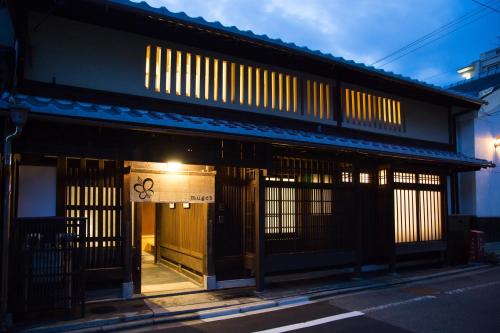
Ryokan Mugen (Adult Only)
Luxury
Mugen is a property that was built 160 years ago, situated in Kyoto, 1 km from Nijo Castle. Every room at Mugen features an en suite shower room, toilet, free toiletries and a hairdryer. Free WiFi is available throughout the entire property. You will find a shared lounge on site and a bar at the annex building. The ryokan also offers bike hire. Imperial Palace is 1.1 km from Mugen, while Kitano Tenmangu Shrine is 1.6 km from the property. The nearest airport is Osaka Itami Airport, 39 km from the property.
View on Booking.com
9.9Booking.com -
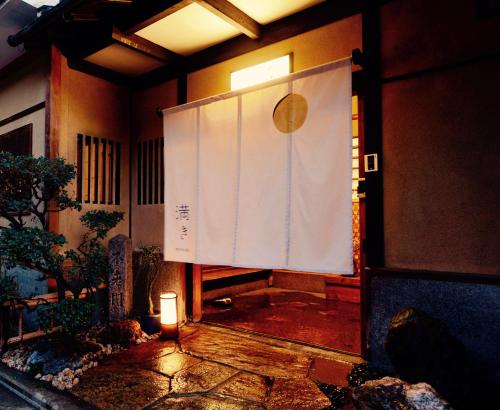
Mitsuki Kyoto
Budget-friendly
Set in Kyoto, 600 metres from Kyoto International Manga Museum and 1.4 km from the centre, Mitsuki Kyoto offers air-conditioned accommodation with free WiFi, and a garden. This 2-star ryokan offers full-day security and luggage storage space. The accommodation provides a concierge service and a housekeeping service for guests. The units in the ryokan are equipped with a kettle. There is a private bathroom with bidet in every unit, along with slippers, a hair dryer and free toiletries. At the ryokan, the units are equipped with bed linen and towels. The ryokan serves a vegetarian and vegan breakfast and breakfast in the room is also available. A bar can be found on-site. Nijo Castle is 1.1 km from Mitsuki Kyoto, while Kyoto Shigaku Kaikan Conference Hall is 1.8 km away. The nearest airport is Itami Airport, 46 km from the accommodation.
View on Booking.com
9.9Booking.com -
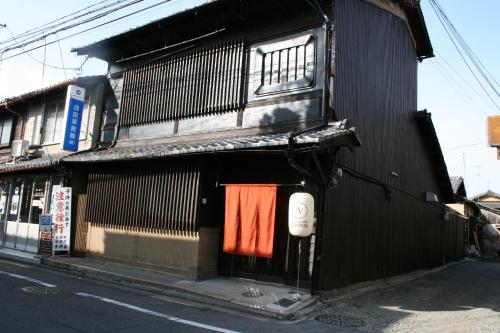
Guesthouse KYOTO COMPASS
Budget-friendly
Located in Kyoto, this traditional Japanese guest house features free Wi-Fi and a free public computer. Shichijo Onmae bus stop is 3 minutes�f walk away. A seating area and shared bathroom are provided with each room at Guesthouse KYOTO COMPASS. Free toiletries are provided and blankets are available upon request. Select rooms have a garden view. A shared living area and bicycles are available for guests�f use during their stay at this Kyoto Guesthouse Compass. Access to the shared kitchen is available upon request. The guest house is 4.5 km from Imperial Palace and 2.2 km from Kyoto Station. Nijo Castle and Toji Castle are within a 30 minutes�f bus ride away.
View on Booking.com
9.8Booking.com -
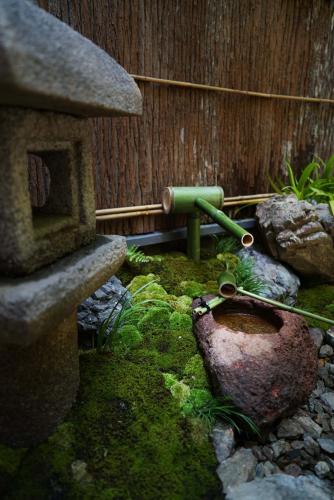
Ryokan Tori
Mid-range
Ryokan Tori is located in Kyoto, 2 km from Kitano Tenmangu Shrine. The property is around 2.3 km from Nijo Castle and Kyoto Imperial Palace. The property is 3.2 km from Kinkaku-ji Temple and 3.7 km from Kyoto International Manga Museum. All guest rooms in the ryokan are fitted with a kettle. Each room has a shared bathroom, while selected rooms are fitted with a balcony and others also offer a garden view. All rooms will provide guests with a fridge. Guests at tori can enjoy an Asian breakfast. Heian Shrine is 5 km from the accommodation. Itami Airport is 50 km from the property.
View on Booking.com
9.8Booking.com -

Yado Kiramachi
Luxury
Yado Kiramachi offers accommodation set 600 metres from the centre of Kyoto and provides a garden and a terrace. The air-conditioned accommodation is 600 metres from Kyoto Shigaku Kaikan Conference Hall. The ryokan features family rooms. The units at the ryokan come with a seating area. The units have a coffee machine, a private bathroom and free WiFi, while selected rooms will provide you with a balcony and some have garden views. At the ryokan, all units include bed linen and towels. A bar can be found on-site. Kyoto International Manga Museum is 1.3 km from the ryokan, while Gion Shijo Station is 1.6 km away. The nearest airport is Itami Airport, 45 km from Yado Kiramachi.
View on Booking.com
9.8Booking.com -
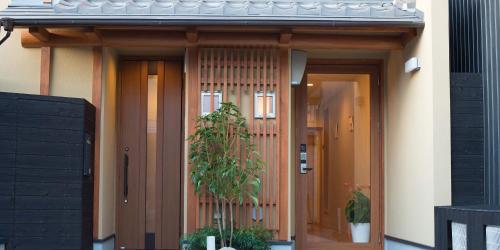
Kyo-Anthu Inn
Mid-range
Located in Kyoto and within 500 metres of Sanjusangen-do Temple, Kyo-Anthu Inn features a garden, soundproof rooms, and free WiFi. It is set 1.3 km from TKP Garden City Kyoto and provides full-day security. The guest house has family rooms. The guest house will provide guests with air-conditioned units offering a desk, a kettle, a fridge, a safety deposit box, a flat-screen TV and a private bathroom with a bidet. Some units also have a well-fitted kitchenette equipped with a microwave and a toaster. At the guest house, all units come with bed linen and towels. Guests at the guest house can enjoy a continental breakfast, and breakfast in the room is also available. Popular points of interest near Kyo-Anthu Inn include Kiyomizu-dera Temple, Kyoto Station and Gion Shijo Station. The nearest airport is Itami Airport, 44 km from the accommodation.
View on Booking.com
9.8Booking.com -

Guesthouse Engawa
Budget-friendly
Guesthouse Engawa offers accommodation in Kyoto. Guests can relax and enjoy the peace and quiet of Kyoto in their rooms. Each comes with a flat-screen TV, and an electric kettle will be provided upon request. Bathroom facilities are shared with other guests. Free toiletries and hairdryers are also available. There is luggage storage space at the property. Kiyomizu-dera Temple is 600 metres from Guesthouse Engawa, while Heian Shrine is 2.4 km from the property. The nearest airport is Osaka Itami Airport, 39 km from the property.
View on Booking.com
9.7Booking.com -
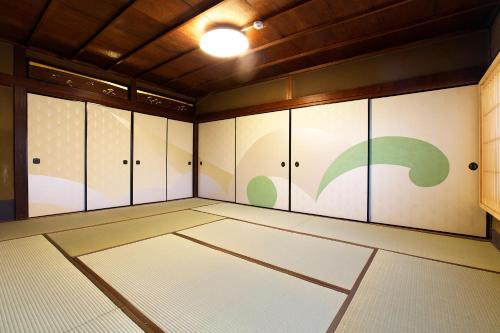
Gallery Nozawa Inn
Budget-friendly
Gallery Nozawa Inn offers accommodation in Kyoto, 25 minutes on foot from JR Kyoto Station. Free WiFi is available throughout the property. Every room includes a flat-screen TV and air conditioning. Each room is equipped with a private toilet, and bathrooms are shared. For your comfort, you will find free toiletries and a hairdryer. There is luggage storage space at the property. Guests can sample Japanese-style breakfast featuring seasonal ingredients. There is a public bathhouse located a 10-minute walk away. Nijo Castle is 2.4 km from Gallery Nozawa Inn, while Kyoto International Manga Museum is 2.4 km from the property. Osaka Itami Airport is 36 km away.
View on Booking.com
9.7Booking.com -
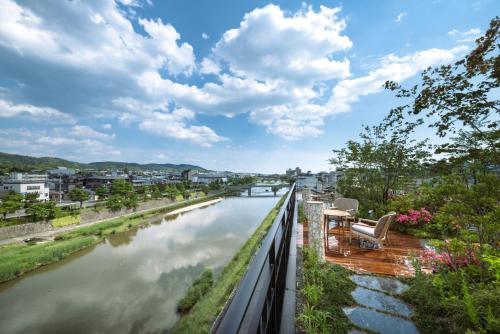
Genji Kyoto, a Member of Design Hotels
Luxury
Genji Kyoto, a Member of Design Hotels features free bikes, garden, a shared lounge and terrace in Kyoto. Among the facilities of this property are a restaurant, room service and a 24-hour front desk, along with free WiFi throughout the property. The property is 2.1 km from the city centre and 1.2 km from Sanjusangen-do Temple. All units will provide guests with a minibar. The hotel offers a continental or Full English/Irish breakfast. Popular points of interest near Genji Kyoto, a Member of Design Hotels include TKP Garden City Kyoto, Gion Shijo Station and Kiyomizu-dera Temple. The nearest airport is Itami Airport, 45 km from the accommodation.
View on Booking.com
9.7Booking.com -
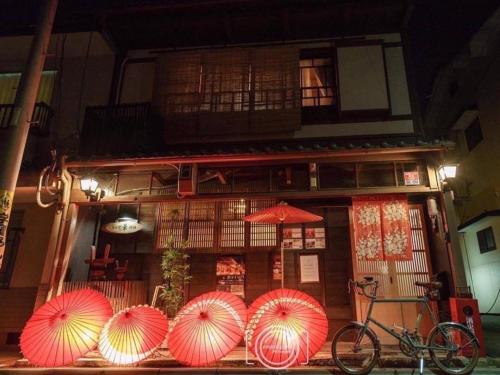
Guesthouse HANA Nishijin
Mid-range
Guesthouse HANA Kyoto is located in Kyoto, 300 metres from Kitano Tenmangu and 1.2 km from Kinkaku-ji Temple. A simple complimentary breakfast service is provided for guests. Bathroom facilities are shared. Guesthouse HANA Kyoto features free WiFi throughout the property. There is a shared kitchen and a common area with a TV at the property. Nijo Castle is 2.1 km from Guesthouse HANA Kyoto, while Imperial Palace is 2.3 km from the property. The nearest airport is Osaka Itami Airport, 39 km from Guesthouse HANA Kyoto.
View on Booking.com
9.7Booking.com
-
-

Kimono Rental in Kyoto by momoka
¥550
★★★★★
148
Basic okomon kimono plan: [Included in the fee]: Only okomon kimono and half-width obi are included [Excluded from the fee]: Small bag, tabi socks, rental sandals, muscle wear, and corrections are not included
View on Klook -

Ninja Experience Cafe in Kyoto
¥6,625
★★★★★
22
Learn more about this activity's [Enhanced Health & Hygiene Measures](https://www.klook.com/en-US/article/11049-covid-measures)
View on Klook -

Matcha Ceremony Experience in Kyoto
¥5,000
★★★★★
12
You can enjoy watching the tea ceremony by the teacher and experience the tea ceremony. Comes with matcha and Japanese sweets!
View on Klook -
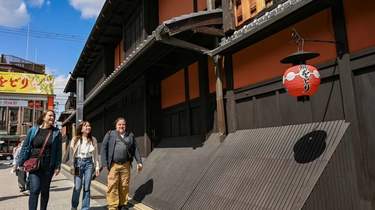
Kyoto Gion Memoirs of a Geisha Private Walking Tour
¥7,712
★★★★★
7
Experience the best of Gion�fs nightlife scene with a local insider to guide you
View on Klook -
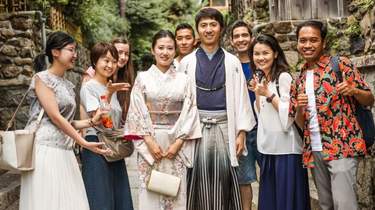
Must See Kyoto Private Tour
¥12,528
★★★★★
4
Get to know the real Kyoto with your host (a city local) and avoid the tourist traps, whilst still seeing the highlights!
View on Klook -
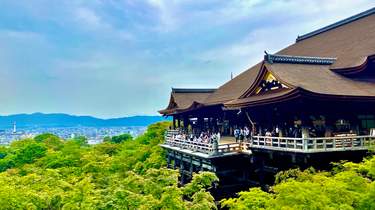
Kyoto Golden Route Day Trip Bus Tour from Kyoto
¥17,500
★★★★★
8
**We will take you to go unmissable sightseeing spots in Kyoto with English speaking guide. Let's explore together.**
View on Klook -

Handmade Workshop Experience in Kyoto
¥1,100
★★★★★
23
A townhouse with a nostalgic atmosphere. Feel free to visit the museum inside the store.
View on Klook -
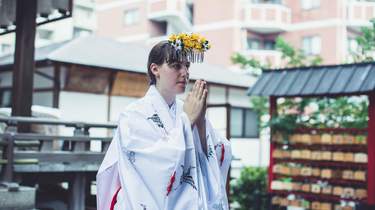
Shrine-Maiden Experience in Kyoto
¥10,125
★★★★★
14
In Japan, a "Miko" refers to a Shinto shrine maiden
View on Klook -
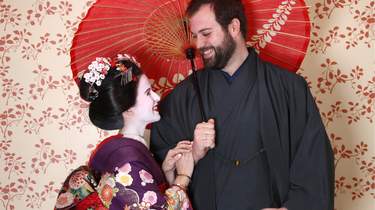
-
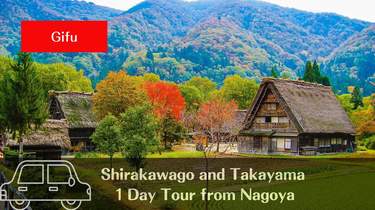
World Heritage Shirakawago and Takayama Private Tour from Nagoya
¥110,000
★★★★★
3
Learn about the history of Japanese traditional buildings at your leisure.
View on Klook
-